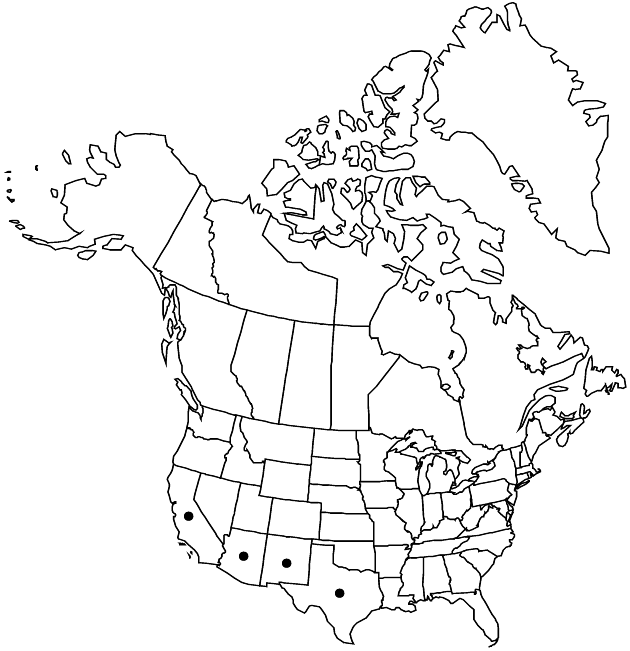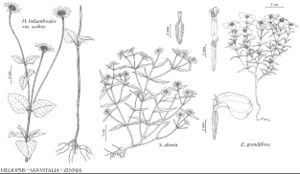Difference between revisions of "Sanvitalia abertii"
Mem. Amer. Acad. Arts, n. s. 4: 87. 1849.
Illustrated
imported>Volume Importer |
imported>Volume Importer |
||
| Line 49: | Line 49: | ||
|publication year=1849 | |publication year=1849 | ||
|special status=Illustrated | |special status=Illustrated | ||
| − | |source xml=https:// | + | |source xml=https://bitbucket.org/aafc-mbb/fna-data-curation/src/2e0870ddd59836b60bcf96646a41e87ea5a5943a/coarse_grained_fna_xml/V19-20-21/V21_154.xml |
|tribe=Asteraceae tribe Heliantheae | |tribe=Asteraceae tribe Heliantheae | ||
|subtribe=Asteraceae (tribe Heliantheae) subtribe Ecliptinae | |subtribe=Asteraceae (tribe Heliantheae) subtribe Ecliptinae | ||
Latest revision as of 20:10, 5 November 2020
Stems erect, 5–29 cm. Leaf blades lance-linear, 20–60 × 2–12 mm. Phyllaries 8–11, subequal. Ray corollas 1.5–2.5+ mm. Cypselae: rays 4 mm (with awns 2–3 mm), subterete, obscurely 3-angled, each sulcate on angles and on abaxial face; discs 4-angled, innermost ± compressed, not winged. 2n = 22.
Phenology: Flowering late summer–early fall.
Habitat: Open places, scrub-lands, pinyon-juniper woodlands
Elevation: 1400–2400 m
Distribution

Ariz., Calif., N.Mex., Tex., Mexico (Baja California, Chihuahua, Coahuila, Sonora).
Discussion
Selected References
None.
Lower Taxa
None.
